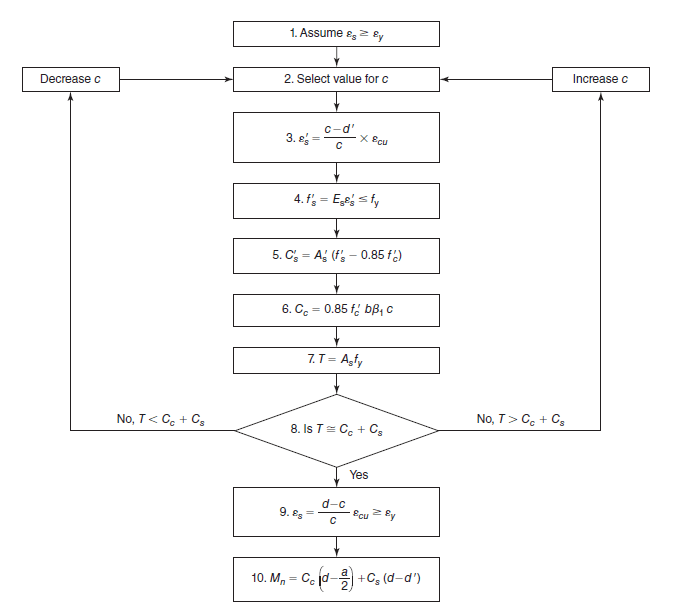In Wight's textbook(attached below), presented an iteration method. In which the final answer from this method won't be exact, unless the stepping size is infinitesimally small. Whether the compression steel is yielded or not, it will be determined and accounted during this process, but still, the final answer won't be exact.

Instead of using this method, would it be better to just solve for the neutral axis directly from the equation?
Assuming tension steel is yielded.
T = C
T = Cc+Cs
As*fy = α1*f'c*b*β1*c+A's*(fy-α1*f'c)
As*fy = α1*f'c*b*β1*c+A's*(Es*(c-d')*εcu/c-α1*f'c)
In which, we can determine which is the correct answer by finding the strain of the compression steel using:
ε's = (c-d')*εcu/c
and if the ε's matches the condition of that equation, that c is the correct c. With this method, the final solution will be exact, it might not matter much but I think it's still better than near-exact solution.
If this method is incorrect or the assumption is incorrect. Please let me know.
Thank you very much!

Instead of using this method, would it be better to just solve for the neutral axis directly from the equation?
Assuming tension steel is yielded.
T = C
T = Cc+Cs
As*fy = α1*f'c*b*β1*c+A's*(fy-α1*f'c)
in case compression steel is yieldedAs*fy = α1*f'c*b*β1*c+A's*(Es*(c-d')*εcu/c-α1*f'c)
in case compression steel is not yieldedIn which, we can determine which is the correct answer by finding the strain of the compression steel using:
ε's = (c-d')*εcu/c
and if the ε's matches the condition of that equation, that c is the correct c. With this method, the final solution will be exact, it might not matter much but I think it's still better than near-exact solution.
If this method is incorrect or the assumption is incorrect. Please let me know.
Thank you very much!
